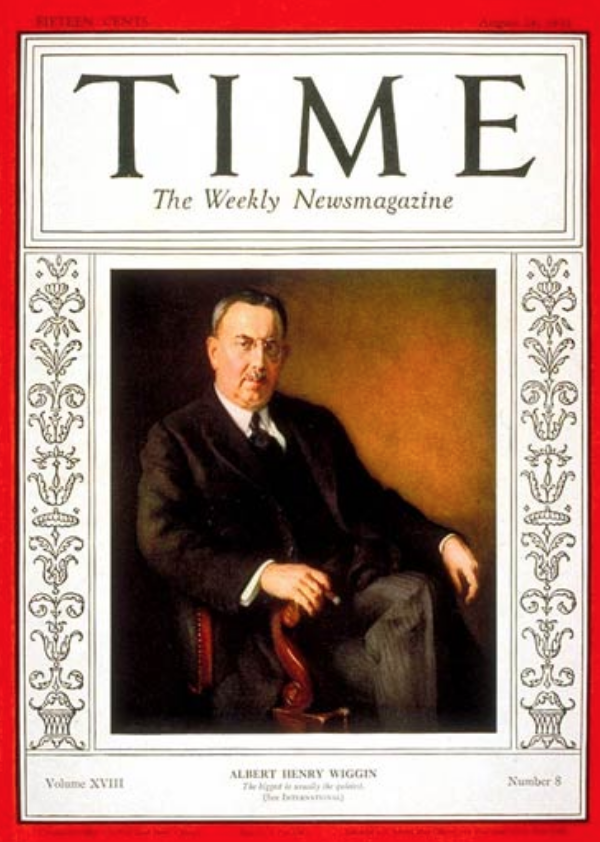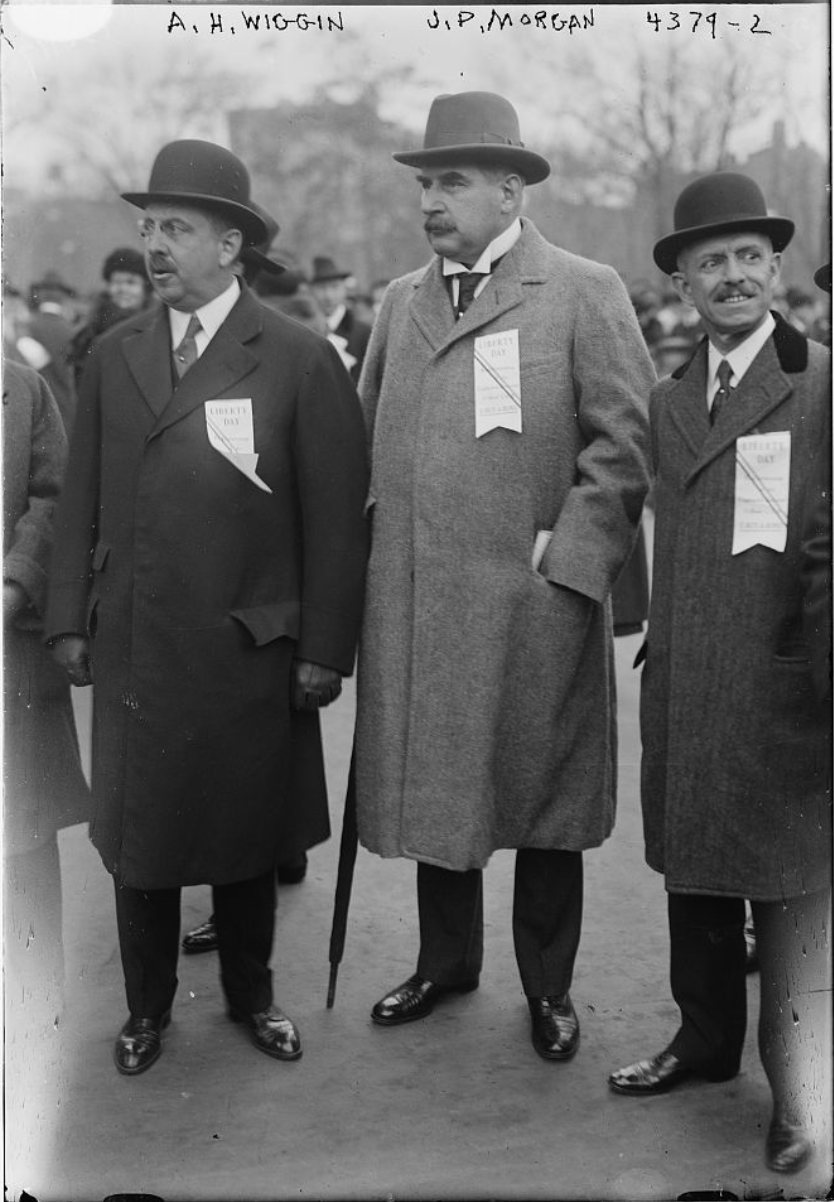Truth is Stranger than Fiction
Courtesy of Michael Batnick
 Imagine Jamie Dimon made a killing shorting J.P. Morgan stock during the Great Financial Recession? And imagine he didn’t get in any trouble for it?
Imagine Jamie Dimon made a killing shorting J.P. Morgan stock during the Great Financial Recession? And imagine he didn’t get in any trouble for it?
This actually happened 90 years ago at Chase Manhattan Bank, while Albert Wiggin was at the helm. This story was marvelously told in Once in Golconda, by John Brooks.
Beginning in July, 1929, Wiggin- as astute as ever- began to see the prospects for the stock market in general and Chase stock in particular as dim. Accordingly, through one of his personal companies he sold over 42,000 shares of Chase stock short. He was then in the curious position of having a vested interest, and a huge one, in the deterioration of the institution he headed. Just as corporate officers are usually encouraged to own stock so that they will have added incentive to put out their best efforts, so Wiggin, with his short position in Chase stock, had provided himself with incentive to produce his worst efforts. This was legal; the audacity of his action was such that the question of forfending it by law had apparently never come up. Moreover, it was perfectly timed. When the account was closed that November, the whole market had collapsed as Wiggin had foreseen, and the profit to his personal company came to just over four million dollars. And no one- for several years- was the wiser; when Wiggin retired in 1932, the Chase’s executive committee thanked him fulsomely for his uncounted services to the bank and unanimously voted him a life pension of $100,000 per year.
The kicker is Wiggin used a Canadian shell company to short the stock so he didn’t pay taxes on any of his gains. When the Securities and Exchange act was enacted a few years later, section 16 was written to prevent such abuses of power by corporate directors. They called this the anti “anti-Wiggin” proposal.
One more wild story that happened during the Great Depression.
We joke about manipulation in the market, but when Roosevelt took us off the gold standard in 1933, there’s no other word to describe how the price of the metal was determined.
Everybody in the Street was spending his odd moments trying to guess exactly how the amount of the daily gold price rise was being determined. Those engaging in this interesting activity could hardly have been reassured if they had known the truth. As they learned it years later from Morgenthau’s diary, one day he came into the daily breakfast meeting and suggested an increase of somewhere between 19 and 22 cents. Roosevelt proposed 21 cents. “It’s a lucky number,” he explained, cheerfully, “because it’s three times seven.” A touch of numerology was perhaps all the program needed.
If these stories pique your interest, I highly recommend this book.
Here is Wiggin on the left, next to J.P. Morgan Jr.




